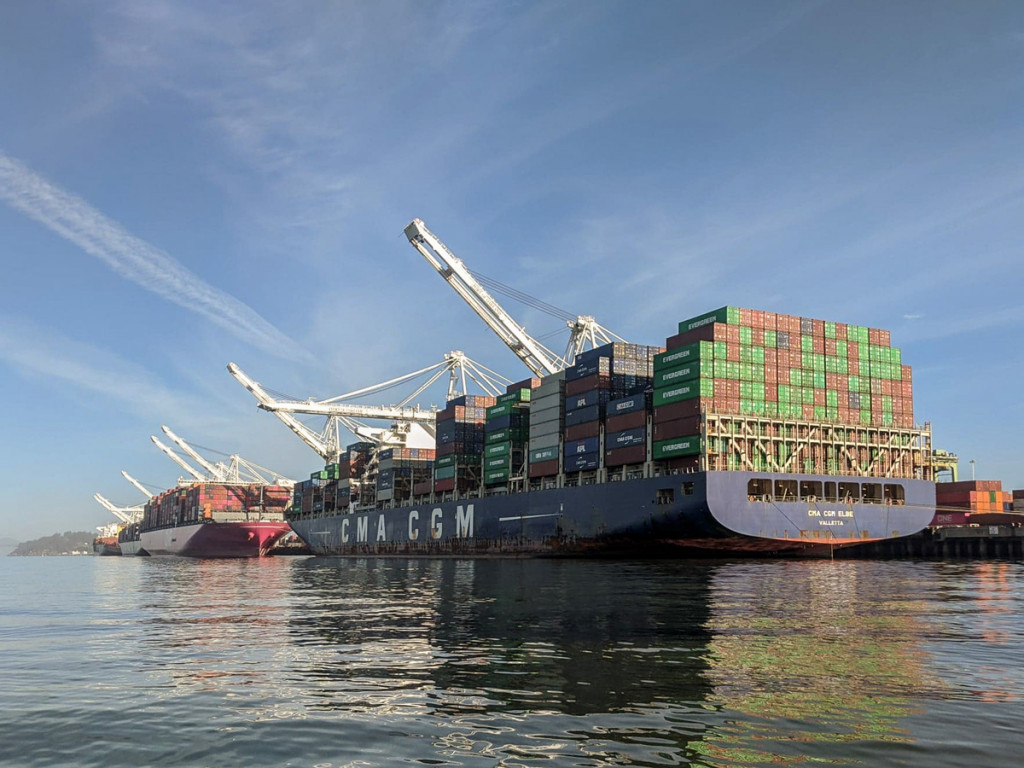In his ‘State of the Port 2021’, Port of Oakland executive director, Danny Wan began his presentation by reciting the lyrics of a song which began “Mercy, Mercy Me, Things A’int What They Used To Be.”
He was alluding to the challenges of the COVID pandemic on Port operations in 2020.
The passengers became stranded on the ship when an outbreak of the COVID virus broke out on board and the Trump administration delayed finding a location to disembark the passengers.
Speaking remotely to an audience organized by Women in Logistics and The Pacific Merchant Shipping Association (PMSA) on January 29th Wan noted some of the highlights of 2020:
- The Port recently received new super high 175-foot cranes that will be deployed at the Oakland International Container Terminal (OICT) operated by Stevedoring Service of America. The cranes will facilitate the loading and unloading of 18,000 teu ships. The new cranes need to be assembled and should be operational by April
- The Port now is the first port of call for a new service from Asia “which will allow customers to avoid congestion at Los Angeles and Long Beach.”
- The Port plans to expand its zero-emission capability by expanding charging stations for electric trucks and consider zero-emission hydrogen fuel cells vehicles.
- The West Oakland Truck Management Plan is helping to reduce truck congestion to West Oakland neighborhoods located near the Port.
- Negotiations with the Oakland Athletics and the Port on a lease agreement for the Howard Terminal site for a ballpark are proceeding “but the Oakland City Council must approve a change in the designation of the site which is now industrial. This is subject to an EIR (Environmental Impact Report) that will be out in February and this will then be subject to a public input process that has yet to begin.”
- The proposed Eagle Rock project will generate aggregate shipments from Canada to be unloaded at the old Ports America terminal: “This is not a cement plant; ships will unload aggregate that is need in the construction of buildings and homes.”
Wan then asked Bryan Brandes, maritime director, Port of Oakland to provide additional updates on the seaport which included:

Seaport Logistics Facility. The 460,000 square foot facility is located on a 27-acre site. The $52 million project allows containerized cargo to be quickly transferred from ships to trucks or rail. The Port expects the facility to increase the volume of international shipments moving through the Port. Construction is projected to be completed in 4-6 weeks and two beneficial cargo owners are currently candidates for tenancy.
The 7th Street grade separation. This will improve roadway flows for trucks and rail. The project will elevate the intersection between Maritime and 7th Streets, reconstruct an ailing railroad underpass and construct a new rail spur. The project is anticipated to be completed in 2023 and cost nearly $600 million.
The Freight Intelligent Transportation System (FITS). This system will provide electronic updates and wait times at terminals that will be available to drivers on mobile phone apps. The project will also enhance port security monitoring and accident and incident warnings through improved data exchange. This upgrade should be completed by 2021.
The Port is also working to expand rail business to destinations at Reno and other points East of the Rockies.
The Port will consider a marine highway project. The State of California is considering reviving a tug/barge service between the Port of Oakland and the Port of Stockton to ease truck congestion on the 580 freeway corridor to Stockton where many distribution centers are located : “The Port currently has no marine highway projects under consideration but we would be open to that…it’s a great opportunity,” said Brandes.

